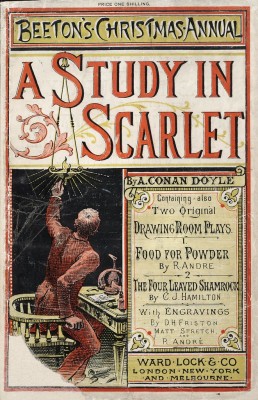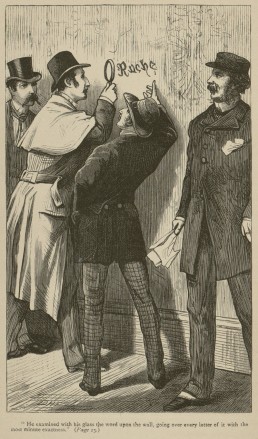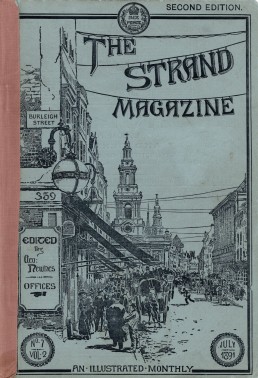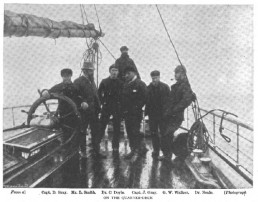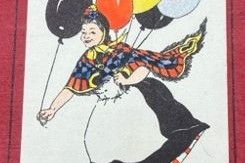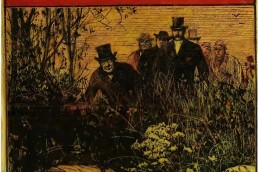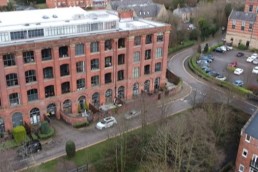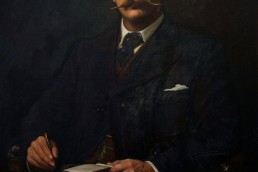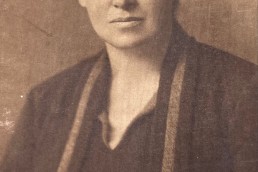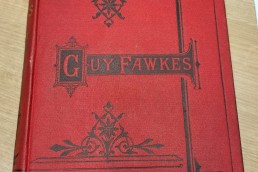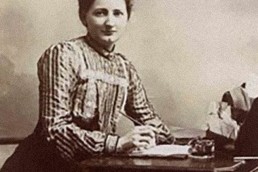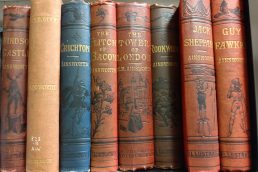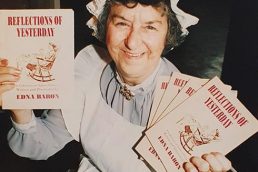Arthur Conan Doyle was born 22nd May 1859 at Picardy Place, Edinburgh. A physician, writer, poet, and playwright (Pascal, 2000), Doyle inherited his family's tendency for artistic skill.
Doyle’s uncles were either writers, artists, or both. Arthur’s grandfather, John Doyle, had been the most famous member of the Doyle family before Arthur. John Doyle wrote under the pen name “B.H” and was known for being a very popular political satirist in his day. In Memories and Adventures (1924) Arthur mentions his grandfather’s skill with drawing caricatures (Doyle, 1924).
Where John Doyle created caricatures, his grandson created characters. In 1887 Arthur Conan Doyle created the most culturally iconic detective in literary history: Sherlock Holmes. Holmes and Watson first appeared in A Study in Scarlet, but unfortunately, it did not make Doyle anywhere near as much money as one would think. Doyle was forced to sell the story’s full rights for £25 to Ward Lock Bower and Co. (Kingler, 2006). To compare, a standard payment for an author from an academic press like the Clarendon Press series would have earned a modest £5-15 on average (Elliot and Feather, 2014), which was worth 1 cow back in the 1890s. Doyle’s £25 payment for A Study in Scarlet was worth two cows back in 1890 (The National Archives, n.d). To the sell full rights was not ideal for Doyle.
Doyle is noted to have argued for payment of royalties instead of giving away the full rights to the story (Kingler, 2006). With royalties, Doyle would have made a percentage ranging from 15-25% of the profits for every new edition created (Allingham, 2001). Considering there are now over forty editions of A Study in Scarlet, it shows how even early in his writing career, Doyle knew where the money was.
Skipping ahead 10 years, and reading the collection of Doyle’s letters sent to the Tillotson Fiction Bureau, it is apparent that by 1897, there was difference in demand for Doyle’s writing, pre and post Sherlock Holmes. In his letter Doyle writes of how ‘my prices on the open market have risen’ from an unmentioned rate up to ‘£45 pounds per 1000 words which is a higher rate of which I have asked of you’. This suggests that while Doyle was high in demand, he could now set the rate at which he would charge for his stories. The fact that the rate is higher and has been ‘steadily rising’ suggests this was when Doyle’s career was still ramping up. Doyle concludes the letter by mentioning ‘my price in 1899 will be about what it is at the present moment’, suggesting that Doyle wished to keep the rise of his rates at a steady pace.
The story Doyle is referring to in the 1897 letter was Uncle Bernac: a memory of the Empire, or Life on a Greenland Whaler. If Doyle was describing the payment he received for Uncle Bernac, he was referring to the sum of £2594.25 for the 57,655-word long story. To compare that to the earlier metric, Doyle would now be able to buy 267 cows as of 1890-1900.
If it was Greenland Whaler, Doyle would have earned £232.56. Again, using the cow metric, Doyle would be able to purchase 24 cows as of 1900. Personally, I view this piece to be the one that Doyle was talking about, as the former’s price is far too high for just one book from a prominent but still up and coming author.
In the January 1899 letter, Doyle writes that on producing a ’60,000-word book […] £2500 [would be] payable upon delivery of the MS’ (manuscript). Two stories were released during this period: The Japanned Box for the Strand and the novel, A Duet, With an Occasional Chorus. It is more likely that Doyle is referring to the novel in his letter. The Japanned Box only contains roughly 4,000 words whereas the novel contains 69,000 words, which fits more closely to the word count specified in the letter.
An annotation at the top of the 1899 letter calculates Doyle’s pounds per thousand-word ratio as being £41 pound every 1000 words. Doyle’s prediction of his rate from 1897 held up; the novel would have made Doyle £2500 in that year alone if the price mentioned in the letter did not change.
To look at Doyle’s financial success, let us compare his 1899 financials just from his serialized stories. In total, Doyle wrote 34,147 words in that year. The letters imply that Doyle’s rates have not changed from the rough ballpark of 40-45 pounds, this then leads to the total sum for that one year being: £1536.62. Arthur Conan Doyle could buy 158 cows. Other authors who held an academic background on the same level as Doyle made around £600 annul (Elliot and Feather, 2014). W. Aldis Wright has a higher average than Doyle. During the 1880s consistently making £1000 with his editions of Shakespeare plays.
Overall, these letters show a stage in Doyle’s lengthy career as a writer. A stage where he has found success and established enough of a name that he can set a rate that is higher than the average writer. The letters show that he was business savvy and the exchanges of money that are responsible for some of his serialized works.
Read Conan Doyle's Story of the Japanned Box in The Strand Magazine, below.
Bibliography
Allingham, P. 2001, How Did Nineteenth-Century British and American Authors Get Paid? [Online]. Available at: https://www.victorianweb.org/authors/dickens/pva/pva77.html [Accessed: 14 April 2023].
Doyle, A. 1899. A Duet, with an Occasional Chorus [Online] UK: Grant Richards. Available at: https://www.arthur-conan-doyle.com/index.php?title=A_Duet,_with_an_Occasional_Chorus#Editions/ [Accessed: 14 April 2023].
Doyle, A. 1892. A Study in Scarlet: A detective story [Online]. New ed. London: Ward, Lock, Bowden and Co. Available at: https://catalog.hathitrust.org/Record/100654189/Cite [Accessed: 14 April 2023].
Doyle A. Memories and Adventures [Online]. UK: Hodder and Stoughton Ltd. Available at: https://www.arthur-conan-doyle.com/index.php/Memories_and_Adventures#I._EARLY_RECOLLECTIONS [Accessed: 14 April 2023].
Doyle A. 1897 Life on a Greenland Whaler, The Strand Magazine [Online], n.d. January, 1897. n.a. Available at: https://www.arthur-conan-doyle.com/index.php/Life_on_a_Greenland_Whaler [Accessed: 14 April 2023].
Doyle, A. 1897, Uncle Bernac: a memory of the Empire [Online]. London: Smith and Elder. Available at: https://catalog.hathitrust.org/Record/006869927 [Accessed: 14 April 2023].
Eliot. S and Feather J. 2014. How much could 19th century nonfiction authors earn? OUP Blog. March 6th 2014. Available at: https://blog.oup.com/2014/03/19th-century-nonfiction-author-earnings/ [Accessed: 14 April 2023].
Klinger, 2005. The New Annotated Sherlock Holmes (Vol. 3). UK: W.W Norton and Company.
Pascal, JB 2000, Arthur Conan Doyle : Beyond Baker Street, Oxford University Press, Incorporated, Cary. Available from: ProQuest Ebook Central [22 April 2023].
Project Gutenberg, n.d. Books by Doyle, Arthur Conan (sorted by release date) [Online]. Available at: https://www.gutenberg.org/ebooks/author/69?sort_order=release_date [22 April 2023].
The National Archives, n.d. Currency converter: 1270–2017 [Online]. Available at: https://www.nationalarchives.gov.uk/currency-converter/ [14 April 2023].

